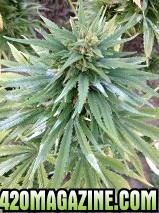Novatokeman
New Member
plants are doing very well they are hidden within a extensive flower garden that is %70 covered in the white powder of death but is less than 1 meter away..... these are the camouflage to the real garden.
i figure i have 3 options
build a small polly greenhouse
leave infected and sprat the fuck outa em with milk n baking soda
remove infected expose garden
any input here would be great
thanks
i figure i have 3 options
build a small polly greenhouse
leave infected and sprat the fuck outa em with milk n baking soda
remove infected expose garden
any input here would be great
thanks



